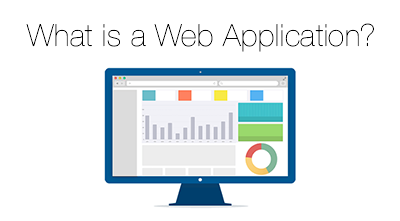What is a Web Application?
In computing, web app or web application is a client-server application software in which the user interface runs in web browsers.

A web application, also known as a web app, is a software application that the client must run in their web browser. It goes without saying that a web application is a client-server software piece, which can be created to serve a variety of needs.
Most popular web applications are built for online shopping, wiki reading, instant messaging, and other types of services. Popular web applications include Facebook Messenger and Google Doc word processors.
Difference between Website and Web Application
Many people may think that a web application is same as a website. But the truth is, they are two completely different things. A website contains lot of content that the user can read and access whereas a web application is defined more by its ability to interact with the user.
Think of a web application as something that can be available on a website, but is not a website itself. For example, Facebook is a website, whereas Facebook Messenger is a web application. And Facebook has many other applications built into it as well, and can include mobile games and search services.
A web application is defined more by its ability to interact with the user. Think of a web application as something that can be available on a website, but is not a website itself. Facebook is a website, whereas Facebook Messenger is a web application. And Facebook has many other applications built into it as well, and can include mobile games and search services.
A website requires a database and backend programming in order to function properly, and must often be hosted in order to appear on the Internet at all. A web application, however, can be run remotely, and functions independently of its host website. It does, however, depends on data storage and backend programming in order for it to continue to function independently.
All the Details
Web applications are broken down into tiers, which are chunks of information that serve as categories for different function. The three main tiers are typically named presentation, application, and storage. The web browser is typically the presentation, the dynamic language such as Java is the application, and an applied database is the storage tier. All of these functions work together to be a built-in piece of software that can be run in a browser or other Internet platform.
Things to Consider
Most websites have web applications installed inside of them, and many customers are not even aware that these web applications are separate from the website. Logging into a social media website and opening a game in the browser is actually part of a web application, and not a website. Consider the key features of a web application:
- Interaction – Web applications interact with the user, allowing them to perform certain functions like chatting with a friend or logging into an account.
- Scripting – Web applications require their own scripting and backend management that works independently of the website itself.
- Less content and more service – The websites provide the content, whereas the web applications allow you to do things with the content. A banking website allows you to view the locations and services of the bank available, but the banking web application allows you to actually log in and manage your personal finances.
A web application is just as common as a website, and both elements are vitally important to the structure of Internet business and ecommerce.